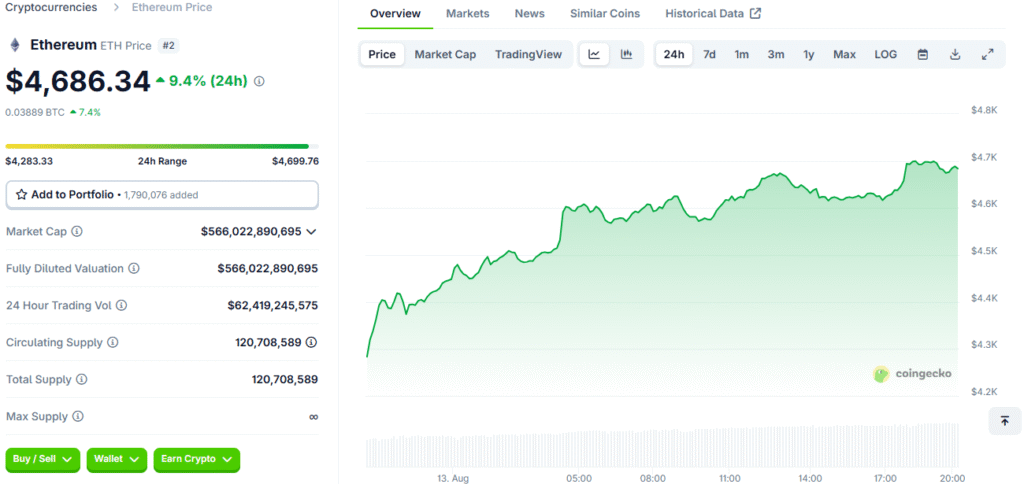A New Hard Fork for Ethereum’s Core
Following its significant Pectra upgrade in May, the Ethereum network is preparing for its next major hard fork, named Fusaka. The upgrade is scheduled for early November 2025 and will focus largely on crucial backend improvements. These changes are designed to enhance the network’s core functionality, targeting scalability, efficiency, and node stability.
Unlike Pectra, the updates in Fusaka will not be as visible to the average user, as they are focused on behind-the-scenes technical enhancements. This new hard fork is a critical step in a longer roadmap of development, ensuring the network remains robust and capable of handling future demands. The careful, methodical approach to these upgrades demonstrates a commitment to the long-term health and security of the Ethereum blockchain.

Key Changes and Ethereum Improvement Proposals
The Fusaka upgrade will introduce a total of 11 technical changes, known as Ethereum Improvement Proposals (EIPs). These improvements are specifically designed to enhance the network’s performance without affecting existing smart contracts or applications. Key changes include faster data handling, better spam protection, and a fairer system for gas pricing. The upgrade will also introduce new cryptography support, which will be essential for future developments.
A notable change will be the increase in the gas limit, which will start near 45 million units and move toward 150 million. This higher gas limit will allow for more transactions per block, a crucial step for improving the network’s scalability and transaction throughput. These technical updates are a testament to the ongoing development and innovation that are a hallmark of the Ethereum ecosystem.
A Deliberate and Secure Testing Process
The Fusaka upgrade is following a deliberate and secure testing process to ensure a smooth and safe transition. Developers began testing in July 2025 with a private devnet, allowing them to work through any potential bugs or issues in a controlled environment. Public testnets are scheduled to run throughout September and October, which will give the wider community an opportunity to test the changes and provide feedback. The final mainnet upgrade is planned for November 5, just before the Devconnect conference in Buenos Aires.
This timing aligns perfectly with Ethereum’s six-month upgrade cycle, which provides a predictable rhythm for development. The scope of Fusaka is intentionally smaller than other forks, with heavy proposals left out to make testing faster and safer. The goal is to improve Ethereum’s core without disrupting existing applications, a crucial consideration for a network with so much value and so many users.
The Subtle Impact on Users and Developers
For developers, Fusaka means a more efficient and powerful network to build on. The increased gas limit will allow for more transactions per block, and the backend improvements will lead to better performance for rollups and other scaling solutions. Critically, existing applications will continue to run without any changes, which minimises the burden on developers. For users, the effects will be subtle but meaningful. They may experience more steady fees and faster transaction times during periods of high network traffic.
While these changes may not be immediately obvious, they will contribute to a more stable and reliable user experience. However, there are some trade-offs to a higher gas limit, as it will mean more work for validators. This could put some strain on smaller operators, but the upgrade is designed to keep the network secure and decentralised, a core principle of the Ethereum ecosystem.
Fusaka as a Stepping Stone to Bigger Changes
Fusaka is not just an end in itself; it is a critical stepping stone that will prepare the Ethereum network for even bigger changes in 2026. The next planned upgrade on the roadmap, named Glamsterdam, is expected to bring a more dramatic change by cutting block times to just six seconds. This would effectively double the network’s speed, making transactions feel near-instant and dramatically improving the user experience.
By implementing the backend improvements in Fusaka first, the developers are laying the groundwork for Glamsterdam and ensuring that the network is ready to handle such a significant change. The strategic, phased approach to these upgrades demonstrates a clear and ambitious vision for Ethereum’s future, as it continues to evolve and scale to meet the demands of a global, decentralised economy.
The Broader Implications for Ethereum’s Future
The Fusaka upgrade, and the larger development roadmap it is a part of, havee significant implications for Ethereum’s future. By consistently improving its core infrastructure, the network is strengthening its position as the leading platform for decentralised applications. The focus on scalability, efficiency, and node stability is a direct response to the challenges of a rapidly growing ecosystem. These upgrades are essential for ensuring that Ethereum can compete with newer, highly optimised blockchains while maintaining its core values of decentralisation and security.
The methodical approach to testing and implementation also demonstrates a level of maturity that is crucial for building long-term trust with both developers and users. The future of Ethereum will be defined by its ability to continue to evolve and adapt, and the Fusaka upgrade is a clear sign that the network is up to the challenge.
The Fusaka Upgrade:: A Crucial Step in Ethereum’s Evolution
The Fusaka upgrade is a crucial piece of a larger puzzle. The changes it introduces will make the network more efficient and stable, setting the stage for the more dramatic changes planned for Glamsterdam. The path forward for Ethereum is one of continuous improvement, with a clear vision for how to increase speed, reduce costs, and enhance the user experience.
The six-month upgrade cycle provides a predictable and consistent rhythm for development, ensuring that the network is always at the cutting edge of blockchain technology. The upgrades, from Pectra to Fusaka and beyond, all contribute to a single goal: to build a more scalable, secure, and decentralised platform that can serve as the foundation for the future of the digital economy. The coming months will be an exciting time for the Ethereum community as they await the launch of Fusaka and look ahead to the transformative changes that are on the horizon.
Read More: Early Ethereum Investor Cashes in on a Portion of Their Holdings























